What is one of the most important species in the world?
The bee!
Find out how to teach kids about bees in a way that’s engaging and enjoyable.
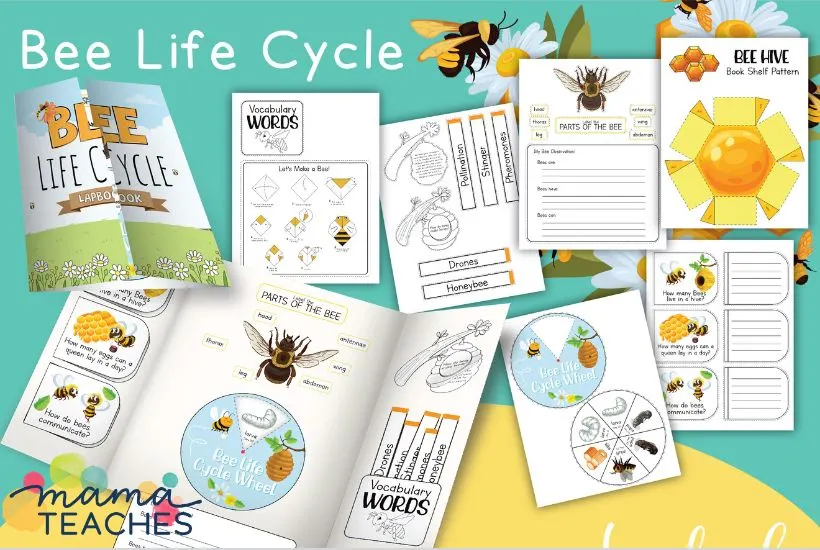
This article contains affiliate links to things that you might like.
Why You Should Teach Kids About Bees
Bees are a vital part of our ecosystem.
In fact, their pollination powers make them keystone species.
Without bees, 30% of the food we eat would not exist.
The flowers would not be pollinated, and the fruit would not grow.
Not only would we miss out on fruits and vegetables, but we also wouldn’t have coffee, nuts, or spices.
We wouldn’t have many kinds of trees, too.
These incredibly important creatures are living under threat.
Pesticides
While pesticides can keep harmful insects from eating crops, they can also do damage to the helpful bee.
Climate Change and Habitat Loss
Bees need a stable environment in which to thrive.
They need a steady source of flowers.
Excess rainfall, drought, and development can destroy the bees’ habitat, making foraging extremely difficult.
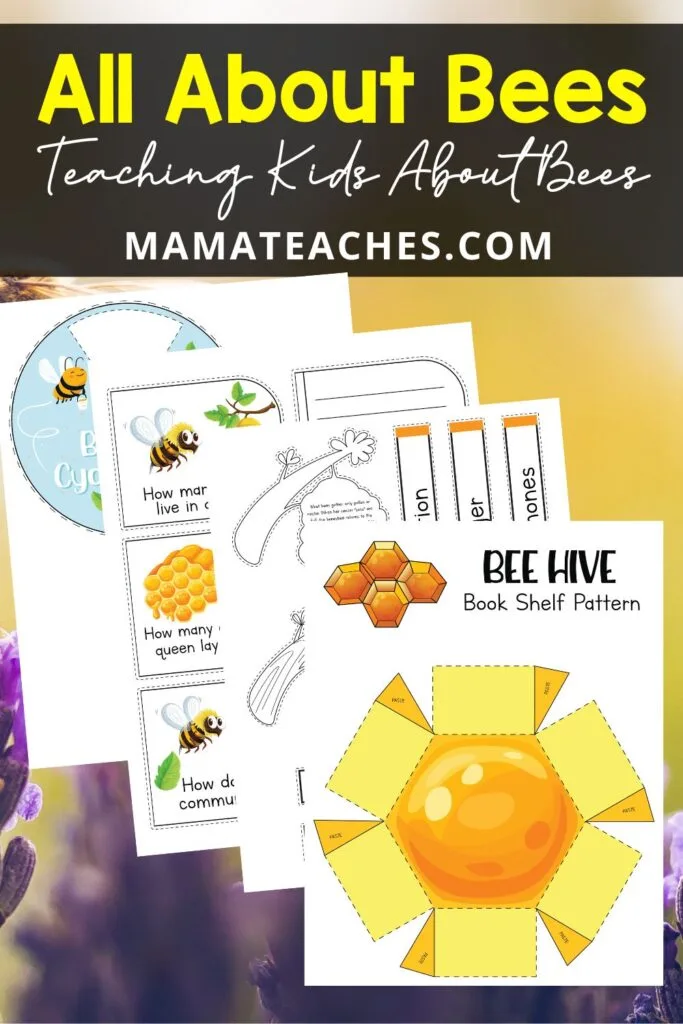
Disease
American Foulbood, a deadly spore-forming bacteria, is killing bees in droves.
Bees need our help to continue to do their all-important work.
They need people to protect them and ensure their strong future.
By teaching kids about bees, you are helping the next generation, our future decision-makers, value bees.
How to Teach Kids About Bees
The best way to teach kids about bees involves three methods:
Read About Bees
Books are terrific places to find bee facts, bee pictures, and stories about bees.
Check out this list of 15 books about bees that can work their way into your science, literature, and history lesson plans.
Nature Study
Observing bees in nature is another wonderful way to teach kids about bees.
Bees are remarkably focused creatures.
They will diligently travel from flower to flower, collecting nectar (and pollen in the process).
Talk a nature walk outside.
If you find bees, stop and observe them at their work.
You can also point out all the flowering plants that depend on bees for pollination.
Check out this video we took of a bee pollinating!
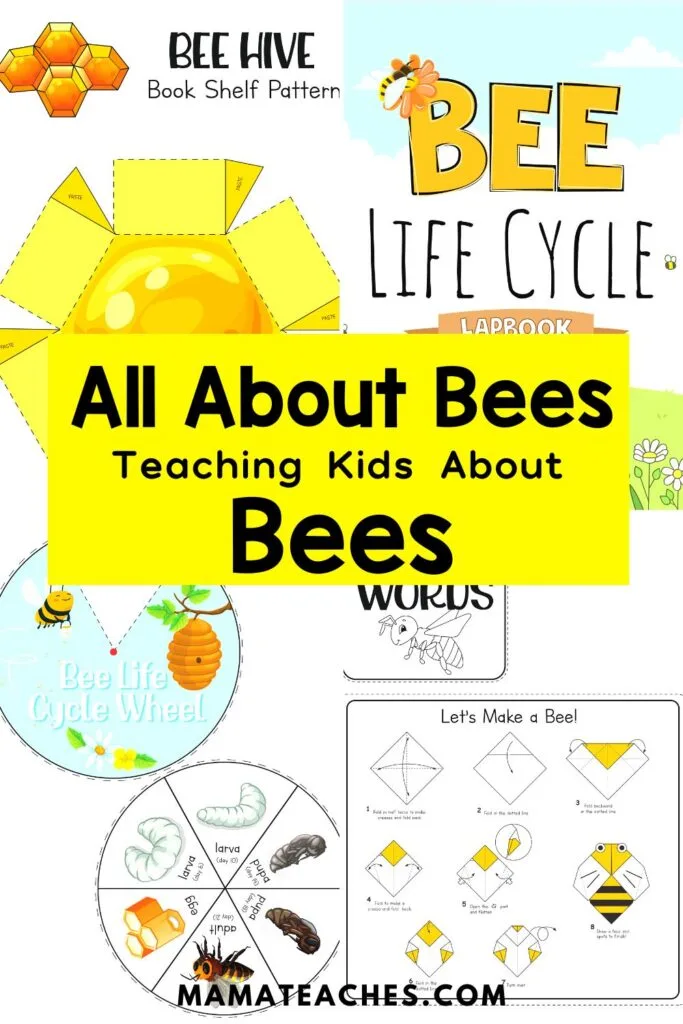
Bee Crafts
A bee is specially designed for the work it does.
You can teach kids about the parts of the bee and follow it up with a bee craft.
You can also do crafts related to honeycomb (and incorporate a math lesson as you talk about hexagons).
Hands-On Bee Activities
Hands-on activities help cement knowledge.
When a student learns by doing, they rarely forget.
By adding some hands-on bee activities to your lesson, your kids will have more fun and retain more information than they would otherwise.
Bee Activities
These hands-on activities will bring your lesson on bees to life!
Bees Lapbook
Lapbooks are interactive ways to store a summary of your lesson content.
Students need to color, cut, draw, write, and paste information about the subject on a file folder.
The result is a colorful and organized conglomeration of what the student has learned.
This bees lapbook has directions for an origami bee, bee vocabulary, parts of the bee diagram, bee fun facts, a bee life cycle wheel, and a bee hive book shelf pattern.
The best part?
You can get this bees lapbook for FREE in the Freebies Library.

Plant a Pollinator Garden
You can help bees and other pollinators by planting wildflowers.
This simple act can provide food for bees and protect them from habitat loss.
If you have a class of students, you can plant wildflower seeds in compostable pots for the kids to take home to their houses.
Make a Bee House
Did you know there are solitary bees?
Honeybees live socially in hives, but many other bee species don’t live in such large groups.
They are effective pollinators as well, but they don’t produce honey that humans can harvest.
You can built a little bee house to help these tiny creatures stay warm through the winter.
The only supplies you need are a tin can, 2 toilet paper tubes, scrap paper, a pencil, tape, and glue.
You can find the directions here.
Bee Pollen Counting and Sorting
Little learners will love counting grains of bee pollen (fluffy yellow pompoms of various sizes) and placing them in egg cartons.
You can also sort the bee pollen by size.
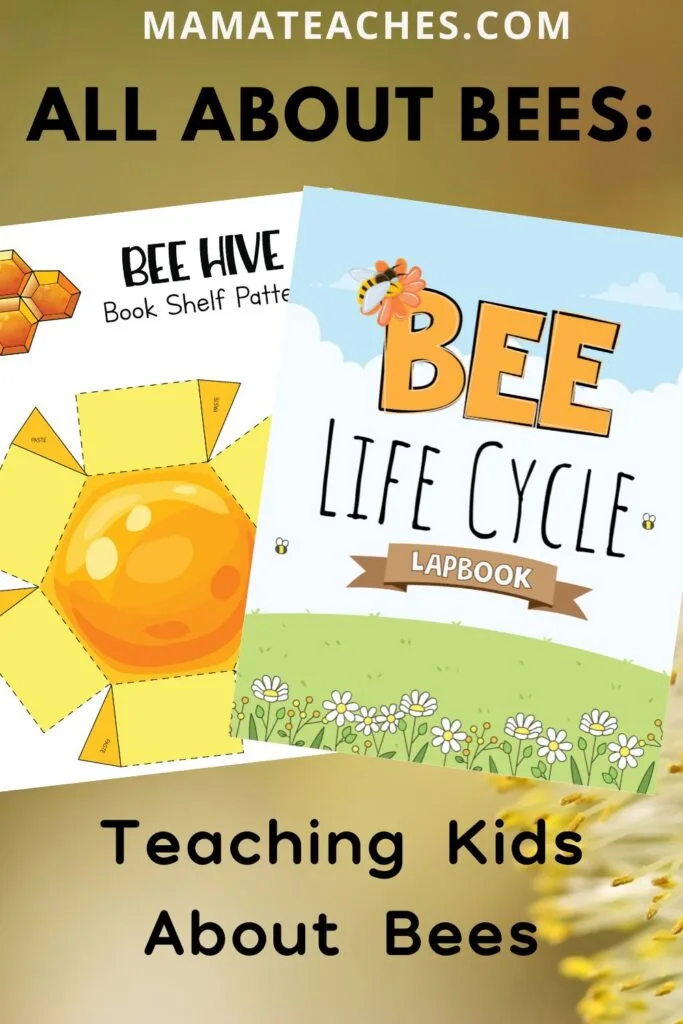
Honeycomb Math
Use Honeycomb cereal as your math manipulative for the day.
You can add and subtract with word problems involving bees.
Honey Play Dough
Make homemade play dough, but swap out 1/4 of the water with honey.
You can color it yellow for extra fun, and add a pinch of cinnamon for an even sweeter scent.
Honey Tasting
Bees make honey from the nectar of different types of flowers.
The nectar changes the taste of the honey.
Buy several types of honey (e.g. orange blossom, wildflower, clover, and tupelo) and do a honey taste test.
What do you notice about the color of the honey?
Which one is sweetest?
Which one is tangiest?
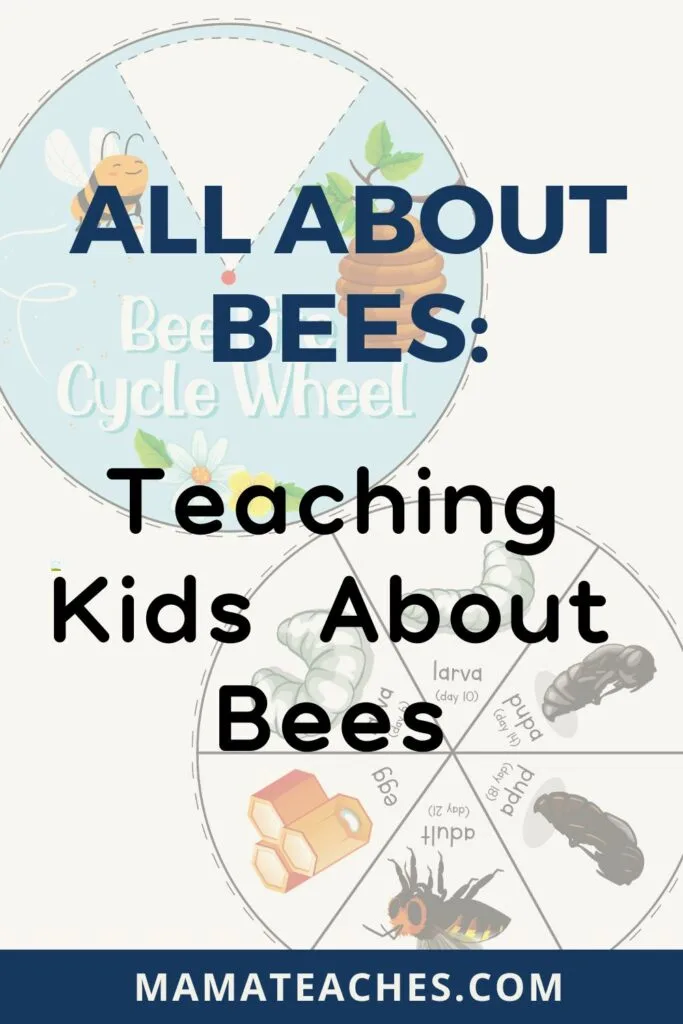
Teaching Kids All About Bees
Whether you choose to read books about bees, make a bees lapbook, or do a honey taste test, your lesson on bees will have the kids buzzing.
These vital insects inspire our wonder and deserve our protection!
